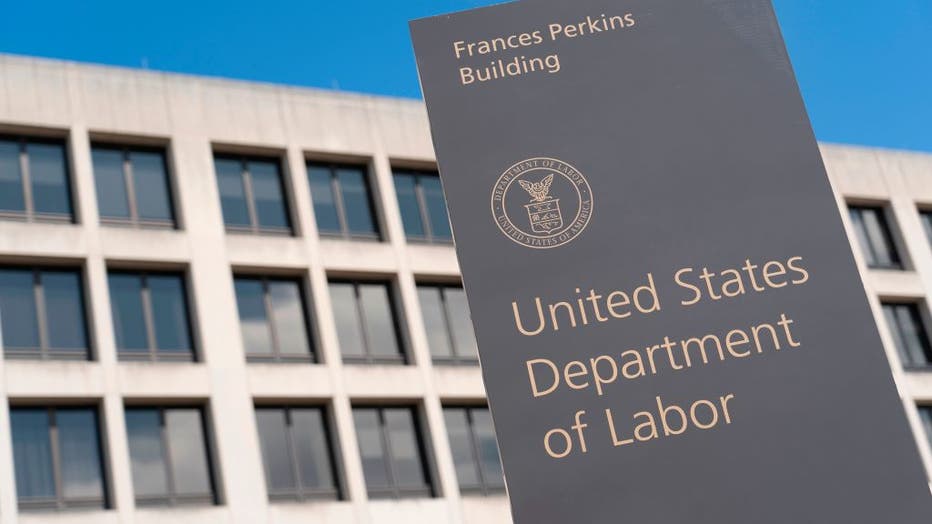Unemployment claims increase to 742,000 as COVID-19 cases surge
Fed chair warns lack of further COVID-19 stimulus imperils recovery
Federal Reserve Chair Jerome Powell warned that a recovery from the COVID-19 pandemic recession could falter unless the federal government provides additional stimulus relief.
WASHINGTON (AP) - The number of Americans seeking unemployment aid rose last week to 742,000, the first increase in five weeks and a sign that the resurgent viral outbreak is likely slowing the economy and forcing more companies to cut jobs.
The Labor Department's report Thursday showed that applications for benefits rose from 711,000 in the previous week. Claims had soared to 6.9 million in March when the pandemic first intensified. Before the pandemic, applications typically hovered about 225,000 a week.
The economy’s modest recovery is increasingly at risk, with newly confirmed daily infections in the United States having exploded 80% over the past two weeks to the highest levels on record. More states and cities are issuing mask mandates, limiting the size of gatherings, restricting restaurant dining, closing gyms or reducing the hours and capacity of bars, stores and other businesses. At least 15 states have tightened curbs on businesses to try to slow infections.
RELATED: COVID-19 deaths in US surpass 250,000 as states add new restrictions
Evidence is emerging that consumers are losing confidence in the economic outlook and pulling back on shopping, eating out and other activities. Spending on 30 million credit and debit cards tracked by JPMorgan Chase fell 7.4% earlier this month compared with a year ago. That marked a sharp drop from two weeks earlier. Consumer sentiment also declined in early November and is down nearly 21% from a year ago, according to a University of Michigan survey.
The number of people who are continuing to receive traditional unemployment benefits fell to 6.4 million, the government said, from 6.8 million. That shows that more Americans are finding jobs and no longer receiving unemployment aid. But it also indicates that many jobless people have used up their state unemployment aid — which typically expires after six months — and have transitioned to a federal extended benefits program that lasts 13 more weeks.
The worsening viral outbreak coincides with the impending expiration of two federal unemployment programs at year’s end that could eliminate benefits for 9.1 million people, according to a report from The Century Foundation. Congress has so far failed to agree on any new stimulus package for jobless individuals and struggling businesses. The cutoff of aid will sharply reduce income for the unemployed, force a further reduction in their spending and perhaps weaken the economy.

The US Department of Labor Building on March 26, 2020, in Washington, DC. - The economic shutdown caused by the coronavirus pandemic sparked an explosion of Americans filing for unemployment benefits. (Photo by ALEX EDELMAN/AFP via Getty Images)
One of those programs is Pandemic Unemployment Assistance, which made self-employed and contract workers eligible for unemployment aid for the first time. PUA was established by a multi-trillion-dollar aid package that Congress enacted in the spring.
The second measure in the stimulus package provided the additional 13 weeks of benefits for unemployed people who have used up their state benefits.
When those two programs expire on Dec. 26, the Century Foundation estimates that 12 million people will lose their benefits. About 2.9 million might be able to transition to a state extended benefit program that can last from six to 20 weeks, the report said. But the rest will lose benefits that average about $320 a week nationally.
The expiration of benefits will make it harder for the unemployed to make rent payments, afford food or keep up with utility bills. Most economists agree that because unemployed people tend to quickly spend their benefits, such aid is effective in boosting the economy.
RELATED: Holiday plans? Map shows real-time COVID-19 risk for gatherings, by county
Cutting off benefits with several million people still unemployed would be unusually early compared with previous recessions. In the Great Recession of 2008-2009, the government extended unemployment benefits to 99 weeks, and the additional aid lasted through 2013. When that program ended, about 1.3 million people lost benefits -- a fraction of the number who would lose their aid at the end of this year.
“We’re still down 10 million jobs since the pandemic began,” said Elizabeth Pancotti, co-author of the Century Foundation report and a policy advisor at Employ America, a left-leaning think tank. “We’re heading into the winter, we’re seeing additional business closures, consumer demand is already falling....Cutting off benefits seems inhumane to me.”
In March and April, when the pandemic erupted in the United States, tens of millions of people applied for jobless aid. Though many of them have been rehired or have landed new jobs, those who haven’t found work began exhausting their six months of state aid as early as September.
Most of them would then shift to the Pandemic Emergency Unemployment Compensation program, which provides 13 additional weeks. Yet the Century Foundation estimates that 3.5 million people will have used up all of those 13 weeks before the year ends. An additional 950,000 people will have run out of the 39 weeks provided by the PUA program by then, too.

